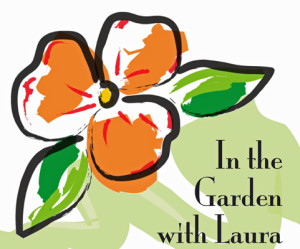 Monarchs have begun their long journey to Mexico after spending the summer on the East Coast. With luck, a new generation will return next summer. What better way to prepare to welcome them back than to plan a garden of milkweed and other flowers?
Monarchs have begun their long journey to Mexico after spending the summer on the East Coast. With luck, a new generation will return next summer. What better way to prepare to welcome them back than to plan a garden of milkweed and other flowers?
Monarchs’ numbers have been dramatically declining. The causes are complex and not fully understood. Scientists, conservation groups and individuals have been working to save them. Gardeners can help too by providing them with nectar and host plants.
 Milkweed
Milkweed
Milkweed is the host plant for Monarchs. After they arrive from their winter home in Mexico, they lay their eggs on milkweed. Once these hatch, the caterpillars ferociously eat the leaves. Despite the feeding frenzy, the plants survive.
There are more than 100 species of milkweeds native to the United States. Only 25% of these serve as host plants for Monarchs. Three that grow in Maryland’s Piedmont region are Common milkweed, Asclepias syriaca L.; Butterfly weed, Asclepias tuberosa; and Swamp milkweed, Asclepias incarnata. Most milkweeds prefer a sunny location. Swamp milkweed likes moist soil, hence its name.

Avoid pesticides and herbicides, especially when plants are flowering or you will do more harm than good. It is also best to buy milkweed seeds and plants that were raised locally. Responsible nurseries should be able to assist you. (So, you don’t interbreed milkweeds and create new cultivars.)
For a complete list of milkweeds native to the Eastern United States, go to the USDA Forest Service’s website:
https://www.fs.fed.us/wildflowers/pollinators/Monarch_Butterfly/habitat/milkweed_list.shtml
Sweet Nectar
Among the Monarch’s favorite flowers are those native to Mexico and Central America, which isn’t surprising since many of them winter in Mexico. (Some live in California.) 
Mexican sunflowers, Tithonia diversifolia, tall (versus dwarf) Zinnias, Zinnia elegans; Salvia, Salvia; and Chives, Allium schoenoprasum, are some of native and exotic plants that Monarch enthusiasts recommend as sources of nectar.
Asters and Goldenrod serve as an important source of nectar for butterflies from August through October, often a lean time for flowers. It is important to grow flowers that bloom throughout the season from spring to fall.
laura 
